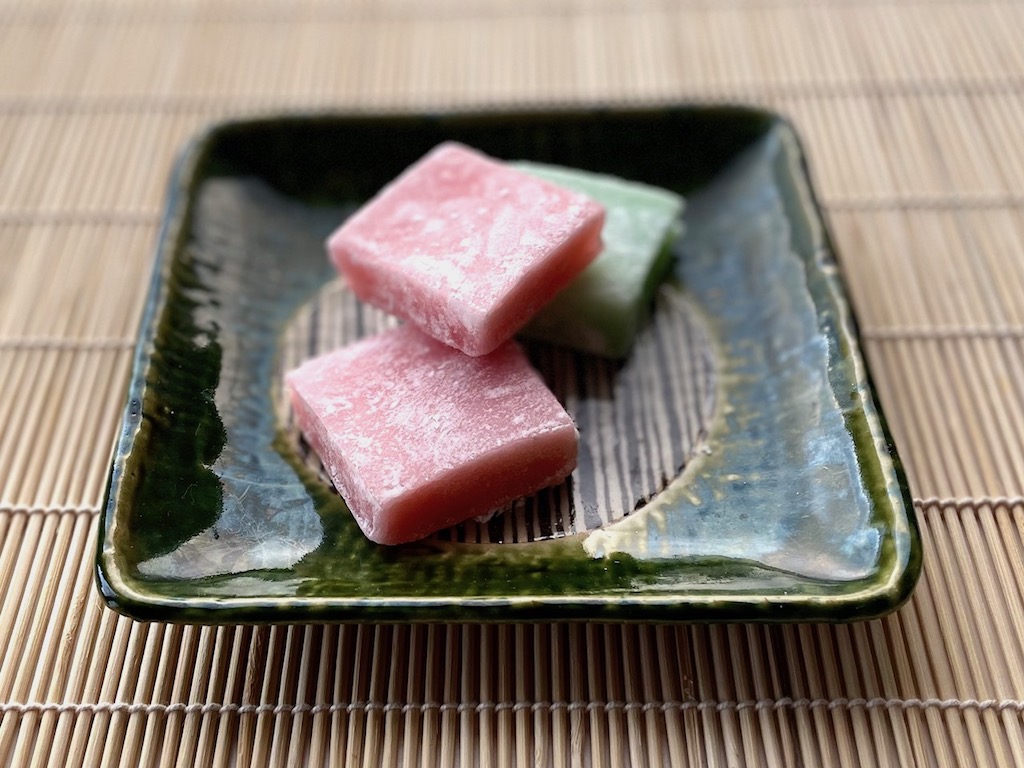How to Make Spam Musubi—Hawaii Snack for Kids
Let’s tackle the negativity first. Maybe you’ve never eaten Spam and wonder why anyone would. Or you are concerned about its nutritional profile. So, why in the world would you make Spam musubi (and what is that, anyway)?
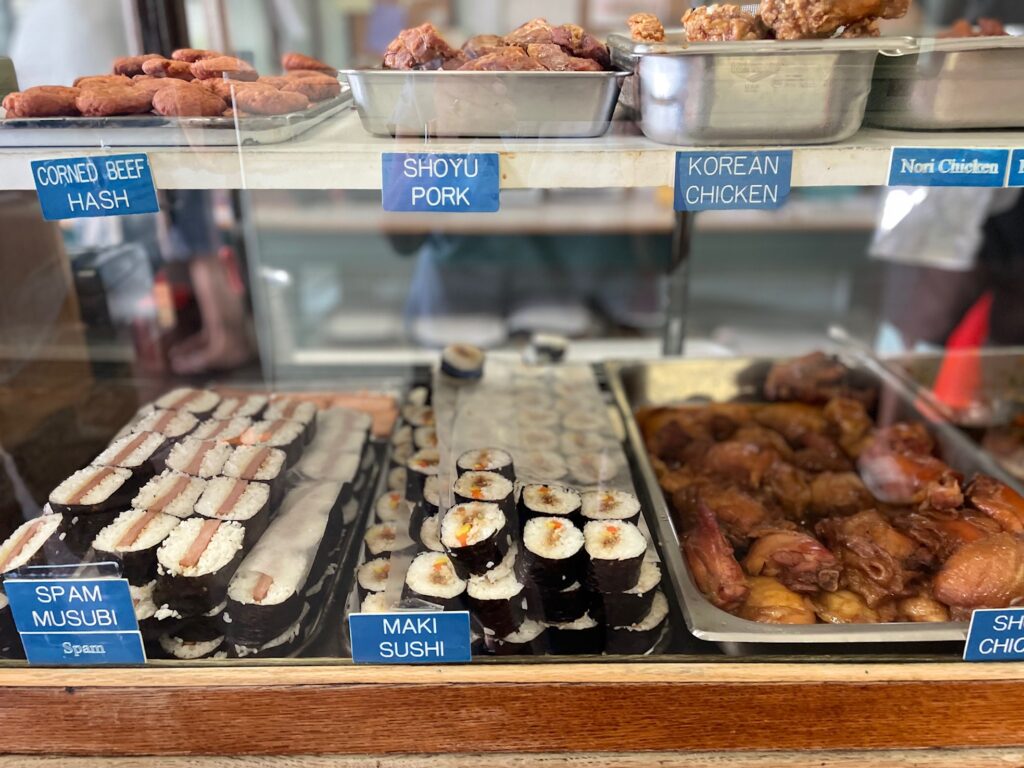
Spam is Ubiquitous in Hawaii
If you live in Hawaii and have never eaten Spam, you are an anomaly. Hawaii is the largest per capital consumer of Spam, to the tune of 7 million cans a year.

According to Arnold T. Hiura, the executive director of the Hawaii Japanese Center in Hilo, Hawaii, Spam was a mainstay of plantation families. With no refrigeration and the high cost and difficulty of obtaining fresh meat in the Islands, a can of Spam was affordable food that would keep.
Even then, families used Spam sparingly to stretch the meat, he added. It was diced and stir-fried with vegetables grown in the home garden.
Food was seasoned to be salty, almost by design. “The more salty the food, the more rice you eat,” he said. So, everyone would fill up on the rice, which families bought in 100-pound bags. It was an economical way to feed a family of eight or ten.
Another popular and delicious snack food in Hawaii is Chichi Dango. Try this easy recipe.
If you would like to better understand the food and culture of Hawaii, Arnold’s award-winning book, Kau Kau: Cuisine & Culture in the Hawaiian Islands, is an informative and fascinating reference.
What is Spam Musubi?
There are many disputed versions regarding the origins of Spam musubi. However it came to be, this is what it is: a slice of Spam (simply fried or cooked in a teriyaki-style sauce), topped with rice, and wrapped in nori (dried seaweed sheets). There are variations, such as including furikake.
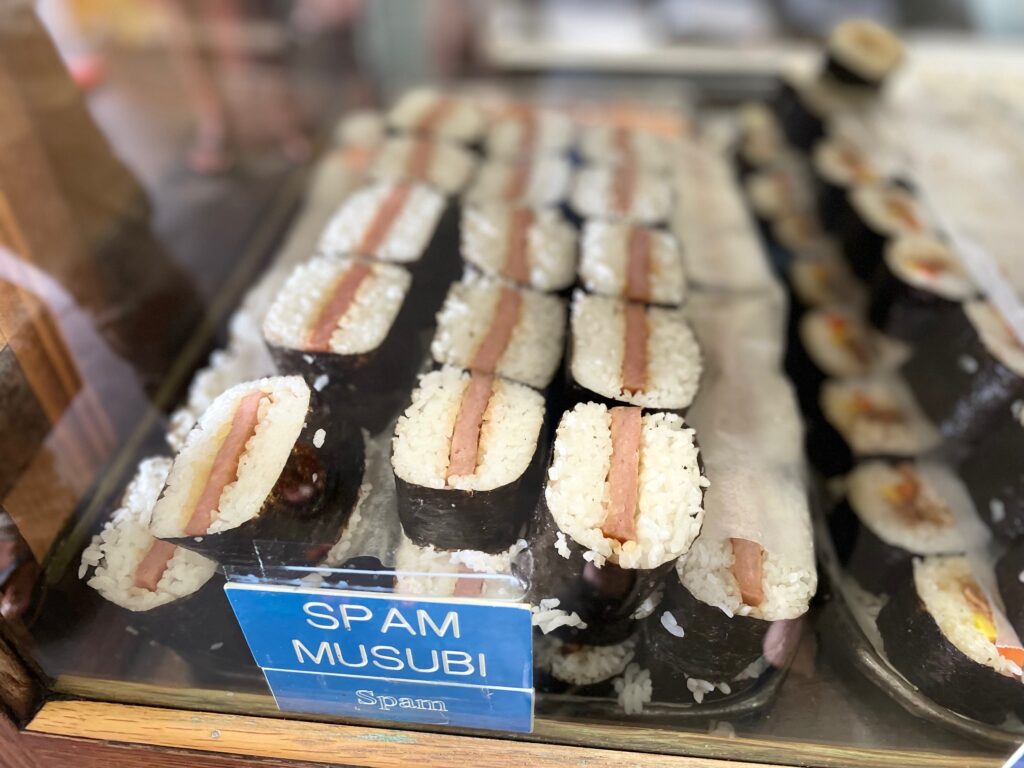
Is Spam bad for you? I’m not a dietitian, but I know it’s high in fat, calories, and sodium, and it is, after all, a processed meat product. It certainly can’t compare to boneless, skinless chicken breasts.
However, if your kids eat hot dogs and other processed meat products, I would think that an occasional Spam musubi would be acceptable. Your call.
For those of us from Hawaii, Spam musubi is already ingrained in our DNA. It’s tasty, portable, convenient, and easy to eat as a hand-held snack. Whether for a bento lunch, an airplane meal, or to satisfy ravenous kids after a day at the beach, Spam musubi fills many needs and is quite addictive.
How to Make Spam Musubi
You’ll need a Spam musubi mold, which is Spam-size plastic box without a top or bottom. It comes with a lid that’s a pusher, to press the rice into shape and release it from the mold afterwards.
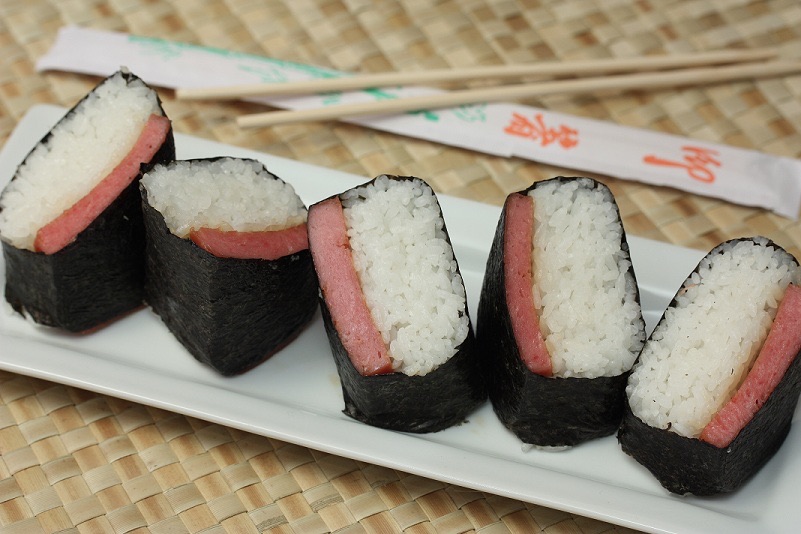
Spam Musubi
- 1 can low-sodium Spam, sliced lengthwise in 8 slices
- 2 tablespoons sugar
- 2 tablespoons soy sauce
- 4 sheets nori (toasted seaweed sheets), cut in half lengthwise with kitchen shears
- 2-1/2 cups raw, short-grain rice, cooked and still hot (see note*)
In a large nonstick skillet over medium heat, fry Spam slices on one side until they just begin to brown. While the Spam is cooking, in a small bowl, combine sugar and soy sauce.
Turn Spam slices and sprinkle with the soy sauce mixture. Using tongs or cooking chopsticks, keep turning the Spam slices and rubbing them into the sauce so they are coated on both sides with the soy sauce mixture as they cook.
Cook until most of the liquid is gone and the Spam slices are slightly caramelized; remove immediately to a plate. Watch carefully because the sugar will burn.
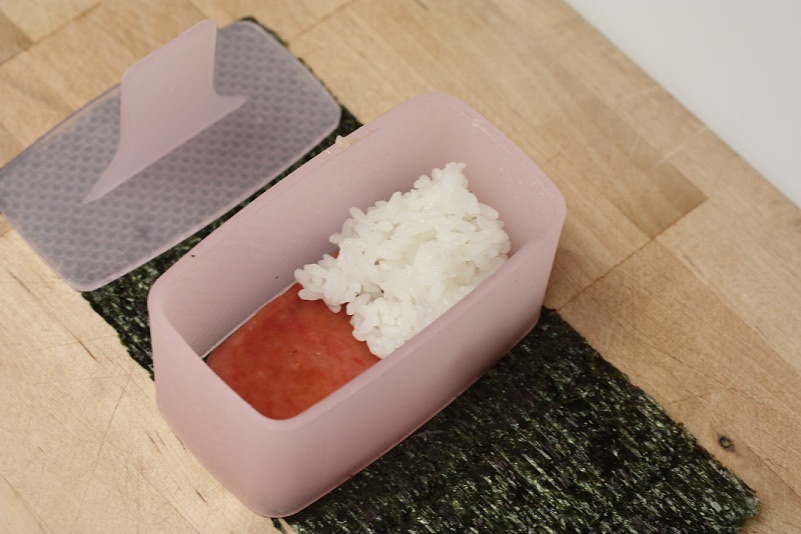
On work surface, lay down one of the half sheets of nori horizontally. Put the base of the musubi mold crosswise, in the center of the nori. Lay down a slice of Spam into the mold and fill loosely with hot rice in an even layer. Put the lid of the mold on the rice and gently but firmly press down on the rice to compact, while lifting up the mold to free the musubi from the bottom.
Wrap each end of the nori to the center to make a nori-encased block of rice and flip the block upside down; the moisture from the hot rice will seal the nori in place.
Repeat with remaining nori, Spam and rice.
Makes 8 Spam musubi.
Note:
*The measurement for the rice is in standard cup measurement; not the smaller, rice cooker cup. Rice amount is an estimate; you may have leftover rice.
Tips:
- While you can just eat the Spam musubi as a block, I like to cut mine in half for a nicer presentation and kid-friendly size.
- If musubi need to sit for a few hours, wrap each whole musubi in waxed paper to keep rice from drying out and slice just before serving.
- You can add more or less rice to the mold, depending on the Spam-to-rice ratio that tastes best to you.
- Instead of putting the Spam at the bottom of the mold, you can sandwich the Spam between two layers of rice as shown in the delicatessen photo above.
Sign Up!
Don’t forget to sign up for my email newsletter. Every Wednesday, I’ll give you a new idea for an activity or insight to nurture the little ones in your life.
